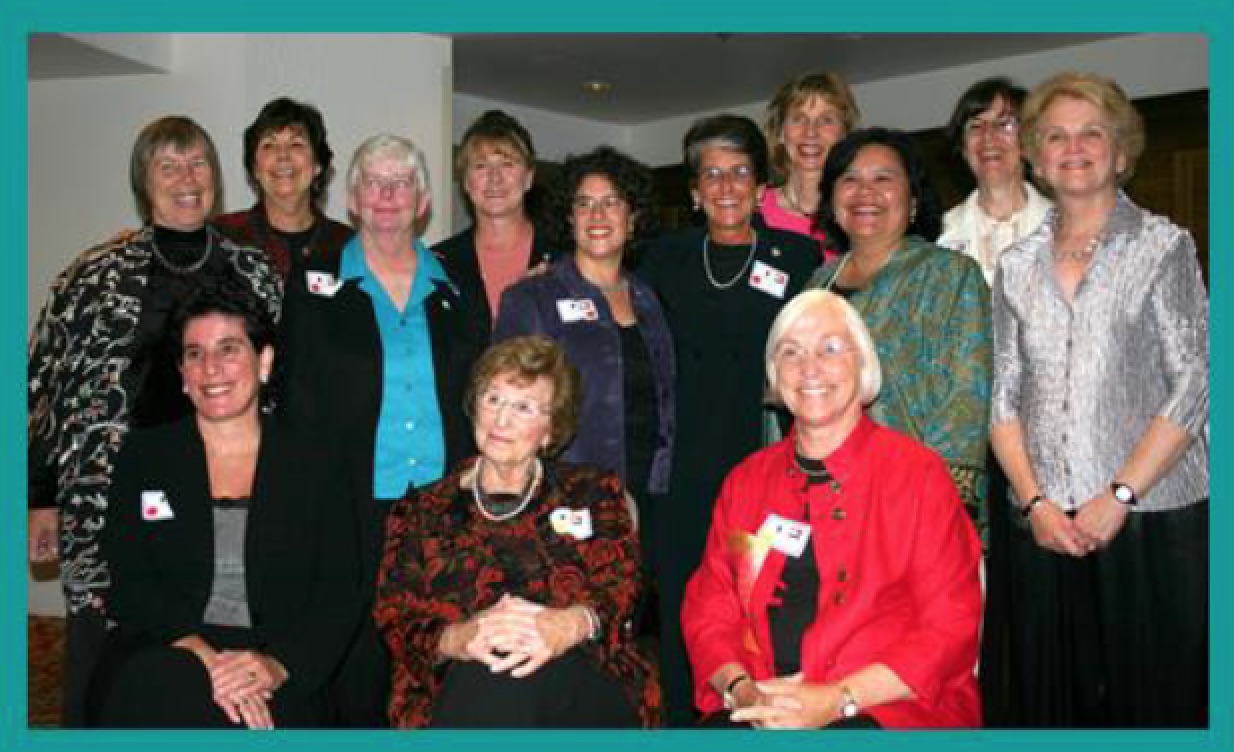The Room Where It Happens
Santa Barbara Women’s Political Committee Celebrates 30 Years of Gaining Elected Officials

When the Santa Barbara Women’s Political Committee was established in 1988, the Reagan administration had succeeded in curtailing feminist gains in employment and reproductive rights while introducing no legislation to support the struggling families that Reagan purported to champion. In 2017, the current administration did as much damage as Reagan had during his eight years, rolling back enforcement of pay equity, environmental safeguards, worker safety, reproductive rights, and protection of women from violence in the home and the workplace.
In 1988, the women’s movement, according to the media, was in decline. Younger women, it was said, were already enjoying the significant gains that the movement achieved in the 1970s, and they saw little need for further action. Conservative politicians were ascendant with the support of groups like Phyllis Schlafly’s STOP ERA [Stop Taking Our Privileges Equal Rights Amendment] and the “right to life” movement, both with their dominant strength in Southern states.
Worried by these developments, longtime feminists Susan Rose, Lois Phillips, and Gayle Binion, energized by their discussions in a seminar at USC’s Institute for the Study of Women and Men, decided to push back against the Reagan administration’s retrograde measures.
On their return to Santa Barbara, Rose, Phillips, Binion, and women from their Santa Barbara networks organized a reception for Betty Friedan at a local restaurant. They were astonished by the enthusiastic response. The women’s movement was not dead after all.
If the movement seemed to have withered, the roots were still there in university women’s studies programs and think tanks, and in professional organizations of women attorneys, journalists, doctors and nurses, educators, and more, all devoted to women’s progress and success.
The Santa Barbara Women’s Political Committee (SBWPC) grew from these roots. Its first board met in 1988. Members included both veterans of the earlier women’s movement and beneficiaries of that movement who were in the prime of their careers. Their focus became increasing the numbers of feminist women on appointed boards and in elected office.
In 30 years the organization has seen some remarkable achievements. By the early 2000s, a record four of the five seats on the Board of Supervisors were held by women. Prominent among them were SBWPC members Susan Rose, Naomi Schwartz, and Gail Marshall. Subsequently, there have always been at least two women on the Board of Supervisors, as well as men endorsed by the SBWPC.
Santa Barbara voters elected founding members Hannah-Beth Jackson and Lois Capps, Jackson to the California Legislature and Capps to the U.S. House of Representatives, the first women from Santa Barbara County to be voted into those offices. Their successors, men and women alike, were also SBWPC-endorsed candidates, as were most of the women elected in unprecedented numbers to the Santa Barbara City Council and the Goleta City Council.
More feminists in elected and appointed offices made a difference. They successfully worked for gender pay equity, legal recognition of domestic partners and same-sex marriages, family-leave policies, protection of reproductive health care, worker protections, expansion of local park space, environmental protections (from reducing the likelihood of oil spills to protecting workers from hazardous materials), sensible gun-safety laws, and immigration rights. They supported increased funding for education at all levels, for children’s health services, and for women’s shelter services.
In just one year, on the national level, all of these measures are being systematically rolled back. In contrast to the reputed apathy of 1987, women in 2017 took action in massive opposition to these attacks on the health and safety of Americans. Marching in the streets is backed by a deep involvement in politics.
More than ever before, American women from many walks of life are inspired to enter “the room where it happens,” the room where life-changing decisions are made. Their family and work experiences enrich their work in government; to be effective leaders, candidates also need to understand our constitutional system of laws and its dependence on standards of ethical behavior.
The SBWPC, with its years of experience, is ready to prepare a new generation of feminist office seekers for the rigors of campaigning and the responsibility of public service.
The public is invited to attend the SBWPC Presidents’ Circle luncheon to celebrate the organization’s 30 years of success. The featured speaker, Los Angeles County Supervisor Sheila Kuehl, knows what it is to be in that “room where it happens,” having served in both the California Assembly and Senate. The event takes place Friday, March 9, 11:30 a.m.-1:30 p.m., at the Hilton Garden Inn (6878 Hollister Ave., Goleta). Tickets can be purchased at sbwpc.org/events/.
Barbara Lindemann was the second president for the Santa Barbara Women’s Political Committee.



